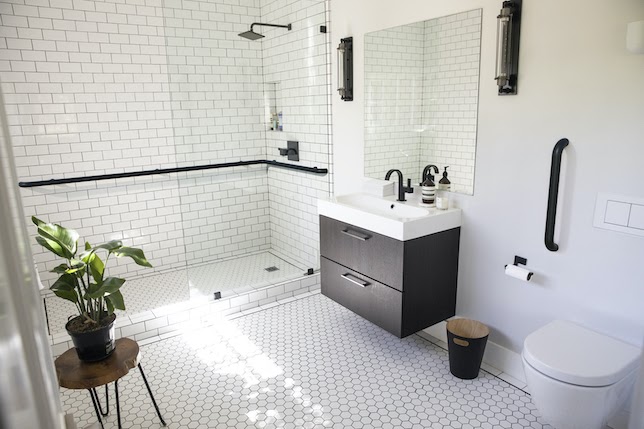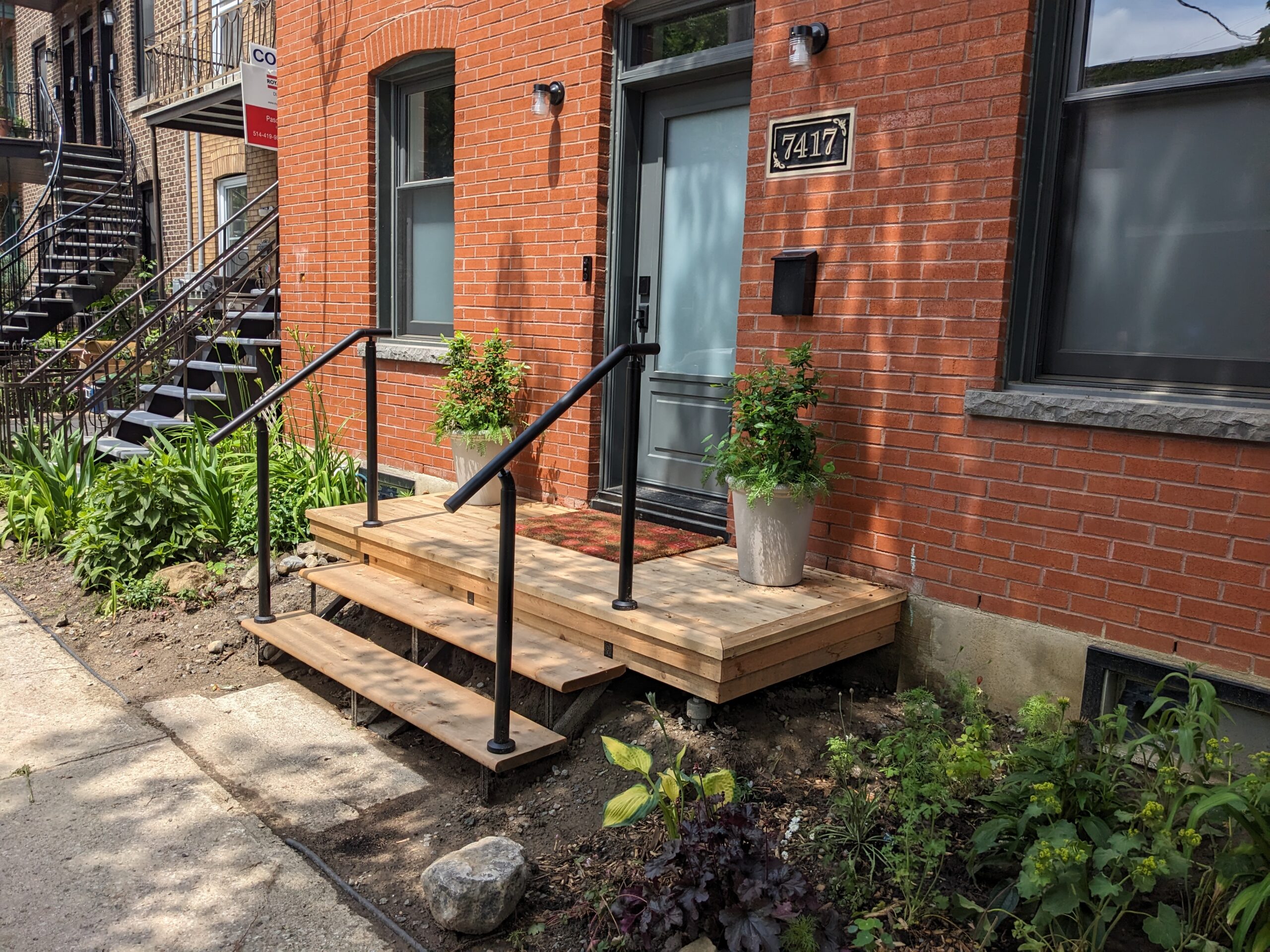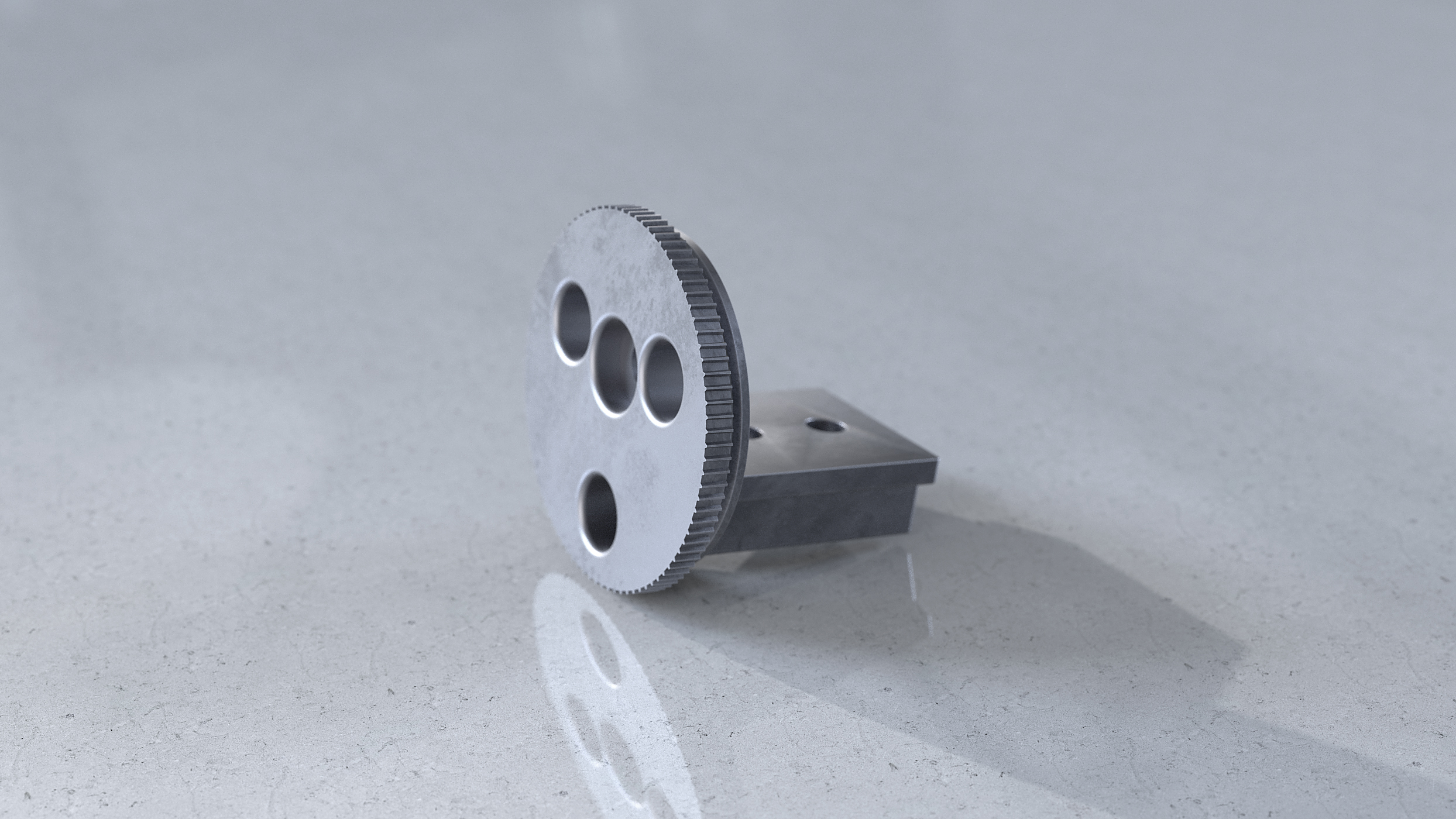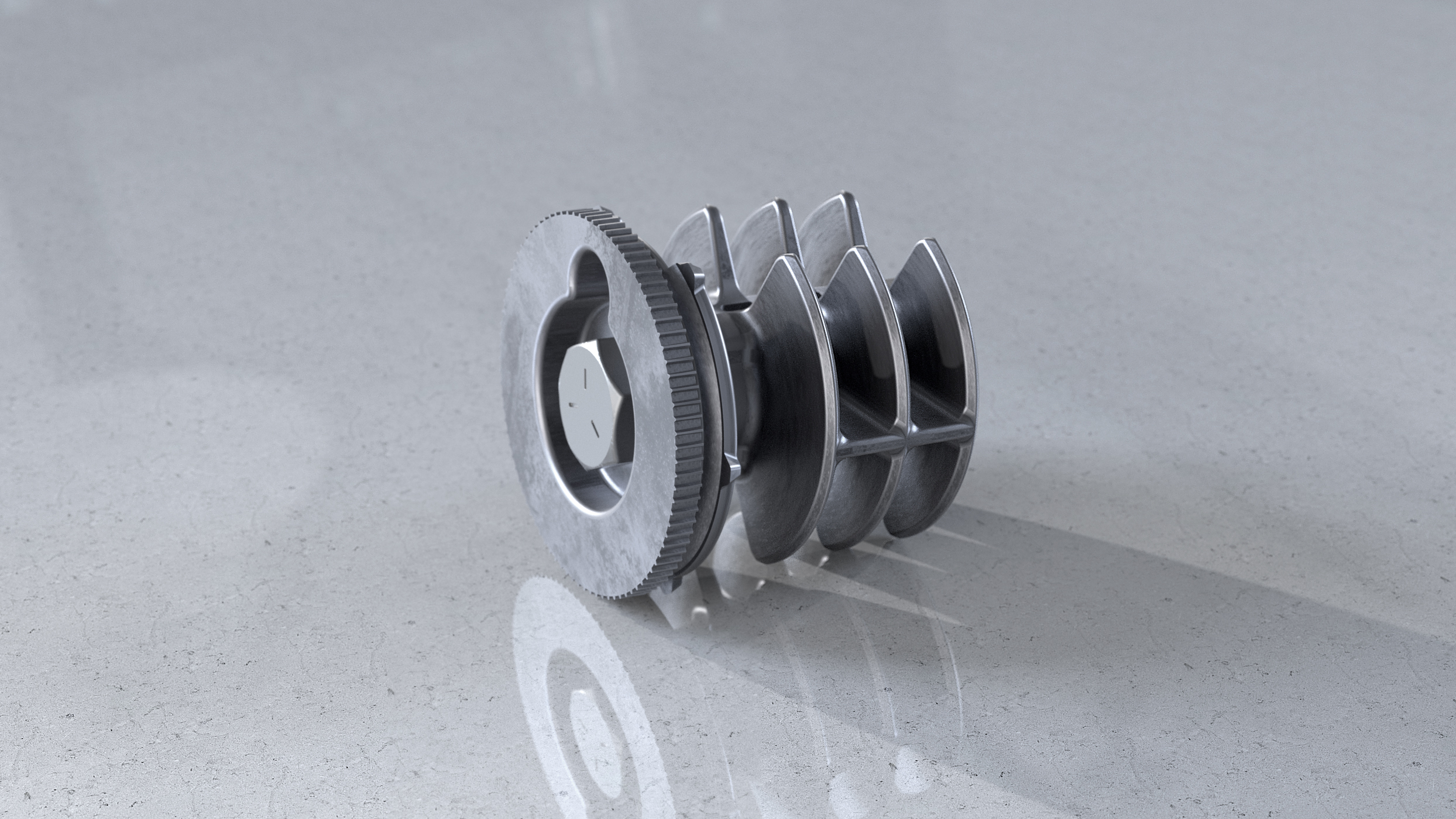The bathroom is a common area for slips and falls, and for those that are elderly or have mobility issues, the bathroom can be a daunting place.
Whether you’re someone who is aging-in-place, have an elderly or family member coming to live with you, or just want to make sure your bathroom can age with you, having an accessible shower design is always great for homes.
An accessible shower is a shower that helps make the process of showering easy and “accessible” for everyone—regardless of age, mobility level, or strength.
Want to know how to create one?
Here are the 7 essentials every accessible shower design must have:
1. A No-Step Design
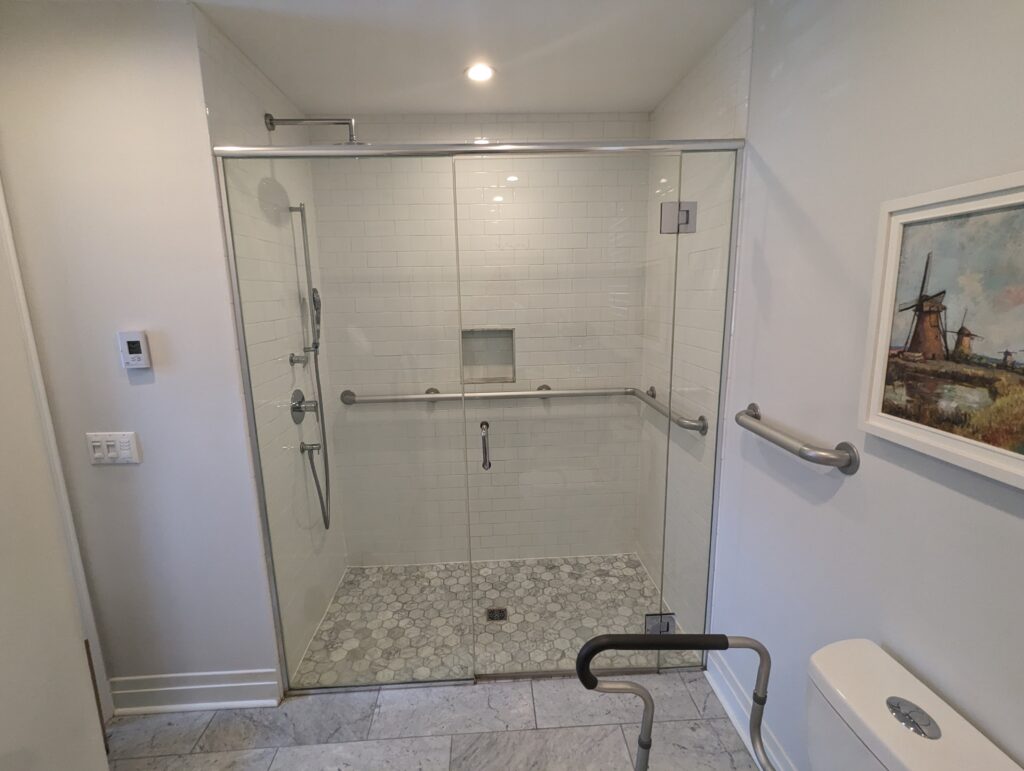
An accessible stand-up shower with a no-step design makes it easier to enter and exit the shower. This type of accessible shower allows seniors, or others with mobility issues, to maintain independence while taking independent care of their own personal hygiene.
If you want to create a luxurious bathroom environment, consider transforming the bathroom into a “wet room.” Wet rooms are generally large, glass-enclosed rooms that include both the accessible stand-up shower and freestanding tub. They are built entirely with materials that are designed to get wet.
With either a no-step shower or wet room, a freestanding tub can be included in the bathroom design, and both types of walk-in showers can be created to look beautiful, rather than clinical.
Accessible walk-in tubs can also be installed to allow for wheelchair access, or simply make it easier to enter the tub without having to step up and over the tub wall.
2. Use “No-Tile” Walls for Minimal Maintenance
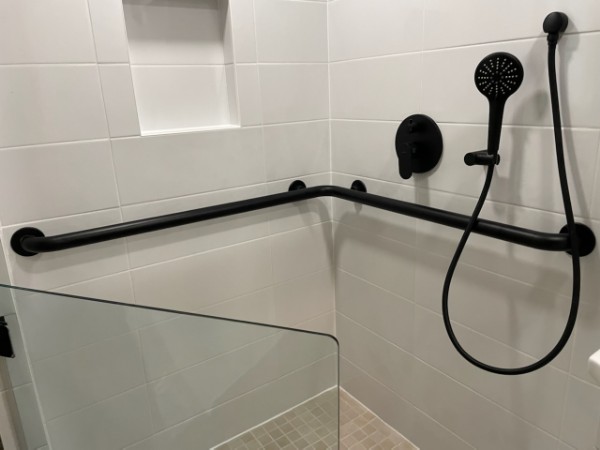
Although tile is a popular material for shower walls, it requires lots of maintenance to keep clean, which isn’t ideal for someone with mobility issues.
Alternatives to tiled shower walls include fiberglass, acrylic, solid surface, stone resin, and marble, all of which are easier to clean than tile and require less maintenance—despite having their own pros and cons.
3. Reconfigure the Shower Control
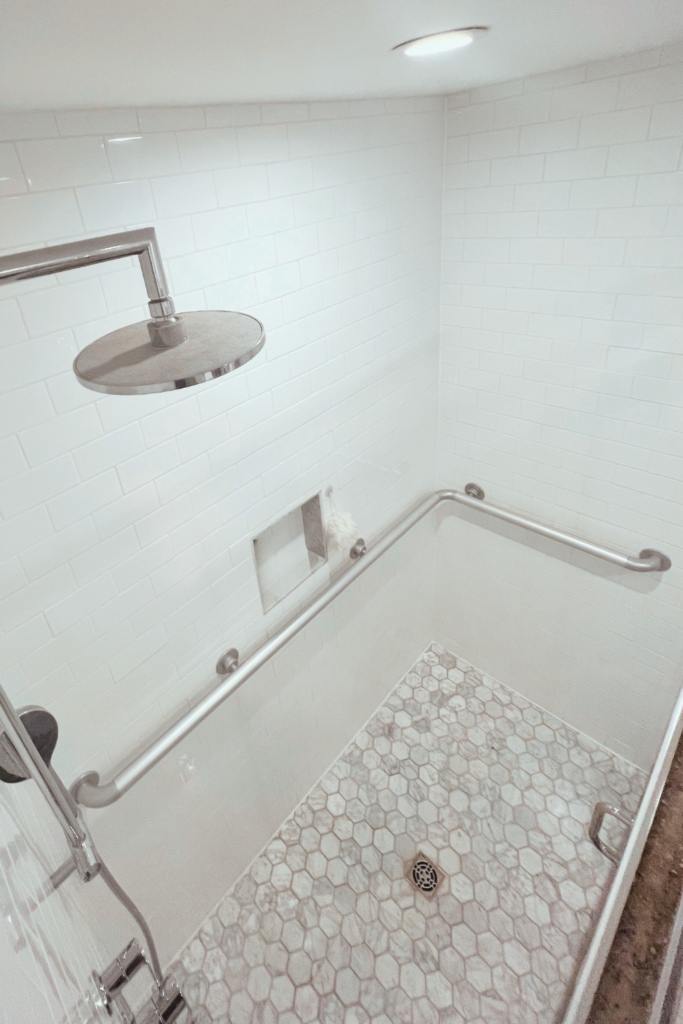
Shower controls that use knobs can be difficult for seniors or others with mobility or strength issues to operate. Reconfiguring the shower controls to include a lever faucet eliminates this obstacle.
Adding a sprayer attachment to the shower also makes rinsing in the shower much easier, especially if the person showering is seated. It also gives much more control over the direction of the water flow.
4. Install a Frameless Door in a Wide Opening

A wide shower door opening makes it much easier to enter and exit the shower, especially if they are using a wheelchair and need to transfer to a shower seat.
A frameless glass shower door allows caretakers to see inside, so they can assist quickly if needed.
Eliminating the door frame is also necessary for creating an accessible shower since there is no curb to step over. A frameless glass door means that you won’t need a shower curtain that can become tangled and cause an accident. It also allows more light to reach the interior of the shower.
5. Add a Seat

Standing in a shower can be taxing, and showers already present a slip and fall hazard, any design element that makes it easier is one to consider. Therefore, adding a seat to a standup shower has obvious benefits for those with mobility, balance, or strength issues.
Make sure that the seat is within easy reach of the shower controls not only for the person in the shower but also for someone outside the shower who may need to lend assistance.
6. Make Sure Lighting and Other Accessories Increase Accessibility
Good lighting can do wonders in any room, but in a bathroom, it can help illuminate any obstacles such as a towel left on the floor, a bunched-up rug, or a damp, wet spot—all of which could lead to falls.
As a result, a waterproof light can even be installed on the inside of the shower, where one isn’t generally found, and on the outside of the shower to help prevent obstacles like these from getting in the way.
7. Install Grab Bars for Stability

Grab bars installed on the interior of the shower or tub or near the toilet will provide additional stability throughout the bathroom.
Installing a grab bar in a shower that is ADA compliant helps ensure that showers are safer and provide stability and support.
Install Promenaid Handrails for Your Accessible Shower Design
Promenaid grab bars don’t just meet the ADA standards for accessibility but also exceed them.
Our patented brackets can withstand up to 500 lbs. of force in any direction, and with the easy twist-lock installation, you can be sure the brackets are perfectly placed to align with a stud.
Our Sprocketlock™ L-Bracket attaches to the shower wall, and a collar connects the grab bar to the disc, locking them together with the turn of a hex key.
If you’re interested, contact Promenaid to begin designing your easily accessible shower today!



